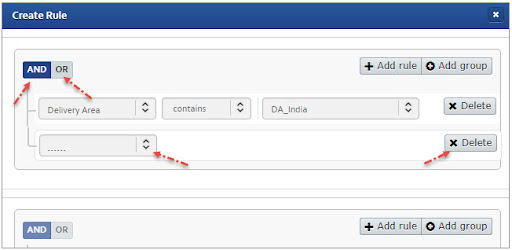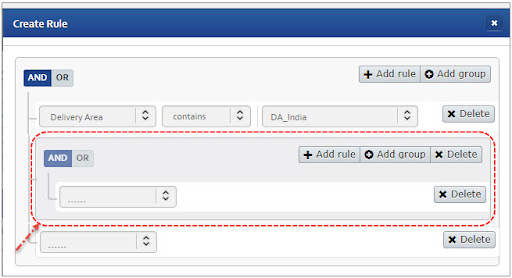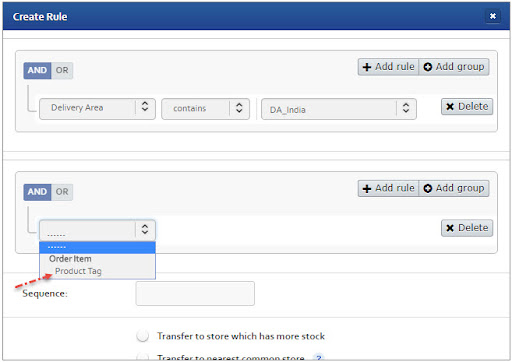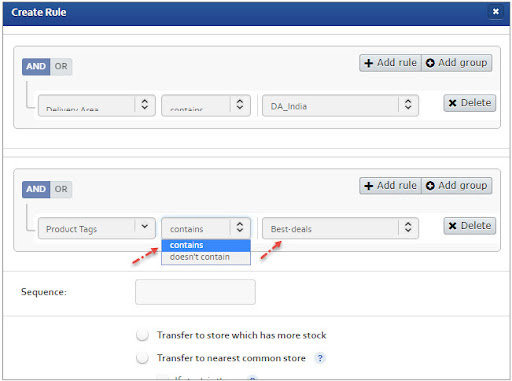Order Allocation
This interface allows you to establish rules for automatically assigning orders to a certain location/warehouse based on the rule criteria. The rules can be defined based on order characteristics, order item attributes, or both.
You may apply various criteria, such as transferring to a store with greater stock, a common store, a common store, a common store, a common shop, a specific store, and so on.
Once the order has been assigned to a location/warehouse, the stock at that location/warehouse will be reduced.
If an order contains many items, each of which must adhere to distinct order allocation standards, product-by-product partial orders will be assigned to the appropriate locations.
How can I create rules that automatically assign orders to a shop or warehouse based on the rule criteria?
Do the following to establish rules for automatically assigning orders to a store/warehouse based on the rule criteria:
-
Go to Orders and Leads > Allocation of Orders.
-
Go to Order Allocation and choose it. The Rule-based Order Allocation Settings page will be shown. The Rule-based Order Allocation Settings section contains any previously set rules (if any).

- Click Create Rule to make a new rule. You'll be presented with the Create Rule dialogue box.
The regulations are divided into two categories (parts).
- Order-based rules may be defined in the top group.
- Rules based on order items can be defined in the bottom group.
- Click the drop-down in the top group to build a rule based on the order parameter. The options listed below will be shown.

- Choose the necessary order-based rule (Say, Delivery Area). The area after that will be opened.

-
From the corresponding drop-down, select the relevant option (for example, contains or does not contain).
-
From the drop-down menu, choose the appropriate choice (for example, the needed 'Delivery Area').
The orders from the designated delivery region will be distributed according to the rule-based order distribution.
For instance, you may make the Delivery Area International and map it to the nations that need to be added to it, allowing international orders to be assigned to a specific place.
- Click the Add Rule button to add another rule (if necessary). The area after that will be opened.

Similarly, as previously described, you can specify another rule (if any).
-
By toggling the AND OR button, you may define the And or Or criterion.
-
By selecting the Add Group button, you may create a new group if you have various combinations of the and/or criteria-based rules. The portion after that will be seen.

You may also add more rules (if necessary) and use the and/or criteria to connect the rules or groups.
You may also create rules depending on the parameters of the order item. To do so, go to the bottom group and click the drop-down. The options listed below will be shown.

- Choose the necessary order item-based rule (Say, Product Tag). The area after that will be opened.

-
From the corresponding drop-down, select the relevant option (for example, contains or does not contain).
-
Select the appropriate choice (for example, the needed 'Product Tag') from the drop-down menu.
-
Select the appropriate product tag if you wish to assign orders including Electronics items to Bangalore.
Prerequisite: You should give each of those electrical goods a unique product tag.
- To create a new rule (if necessary), click the Add Rule button and follow the steps outlined above.
Similarly, by toggling the AND OR button, you may specify the And or Or condition.
You can add another group by clicking the Add Group button as stated above if you have various combinations of the and/or criterion based rules.
Similarly, as mentioned before, you may add more rules (if any) and use the and/or criteria to connect the rules or groups.
-
By selecting the Delete button next to a rule or group, you may also remove it.
-
In the Sequence text box, type the rule's applicability order.
Choose an option from the list below to carry out the action:
- When this option is enabled, the order will be automatically assigned to a location/warehouse that has greater stock.
- If stock is available at locations other than the 'default location,' the stock will be confirmed at those locations, and the order will be assigned to the location with the most stock.
- If all locations except the 'default location' have equal stock, the order will be randomly assigned to one of those locations (excluding the 'default location').
The stock will be confirmed at the 'default location' if no location has any stock or has insufficient stock. The order will be assigned to the 'default location' if the default location has adequate stock. The stock pending order will be created under the default location if the 'default location' does not have enough stock.
Transfer to the nearest common shop: Based on the selection status of the 'If stock is there' checkbox, the entire order will be assigned to the nearest store.
The entire order will be allocated to the 'nearest location' if the 'If stock is there' checkbox is not ticked and the 'nearest location' has adequate stock. If the 'nearest location' location does not have enough stock, a stock pending order will be raised to that location without checking stock at other locations.
If the 'If stock is there' checkbox is ticked, and the 'nearest location' has adequate stock, the entire order will be assigned to that location. If the 'nearest site' does not have enough stock, the stock will be checked at all other close locations (for example, L2, L3, L4,...).
If any of the other close locations (for example, L2, L3, L4,...) has enough stock, the order will be assigned to that location.
If any of the neighbouring sites (such as L2, L3, L4,...) does not have enough stock, the next rule will be applied.
If all of the criteria fail, the stock is checked at the 'default location.' If the default location has enough stock, the entire order will be assigned to it; otherwise, a stock pending order will be placed against the 'default location.'
Transfer to a common shop: The entire order will be assigned to a store that has sufficient stock of all order items. In this instance, the entire order-by-order check will be performed. In this situation, the order will not be separated, and the entire order will be assigned to a single location.
Transfer to the Nearest Warehouse: Based on the selection status of the 'If stock is there' checkbox, the order will be assigned to the nearest shop. In this circumstance, order item-by-item inspection will be performed. In this instance, the order can be separated and distributed to several locations.

You must map the relevant sites with their associated delivery zones. To locate the appropriate delivery region, the 'State' in the shipping address will be compared with the 'State' of the delivery area. If there are a few locations linked to that particular delivery region, the location with the same 'City' as the shipping address will be given first priority. The relevance of all other places mapped to that delivery area is equal.
The order will be allocated to the 'L1' location if the 'If stock is there' checkbox is not ticked and the 'L1' location has adequate stock. If the stock at the 'L1' location is insufficient, a stock pending order will be placed against it without checking the stock at other locations.
The order will be allocated to the 'L1' location if the 'If stock is there' checkbox is ticked and the 'L1' location has adequate stock. If the stock at the 'L1' site is insufficient, the stock at all other adjacent locations (say, L2, L3, L4,...) will be checked.
If any of the adjacent sites (say, L2, L3, L4,...) has enough stock, the order will be assigned to them.
If adjacent places (such as L2, L3, L4,...) do not have enough stock, the next rule will be used.
If all of the criteria fail, the stock is checked at the 'default location.' The order will be allocated to the default location if the default location has adequate stock; else, a stock pending order will be raised against the 'default location'.
When this option is selected, the order will be automatically assigned to a location/warehouse that is chosen from the drop-down menu, as seen in the following scenarios:
The order will be assigned to the specified location if the 'If stock is there' checkbox is not ticked and the selected location has adequate stock.
A stock pending order will be raised against the given location if the selected location does not have enough stock.
The order will be assigned to the specified location if the 'If stock is there' checkbox is ticked and the selected location has adequate stock.
If the chosen site does not have enough stock, the next rule will be used.
If all of the rules fail, the stock will be checked at the 'default location,' and if it is discovered, the order will be assigned to that location.
If the 'default location' does not have any stock, a stock pending order will be placed against it.
Click Save to save the rule. The rule will be stored and listed in the section Rule-based Order Allocation Settings.
Updated almost 2 years ago
